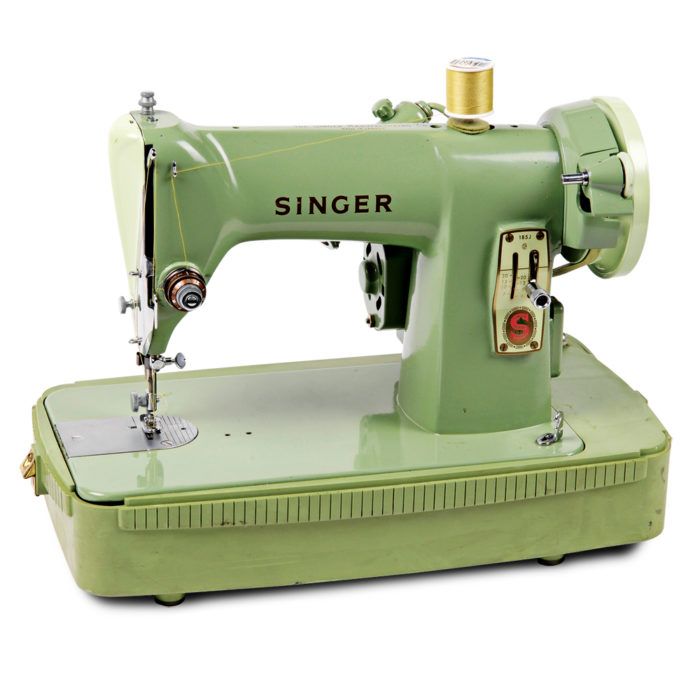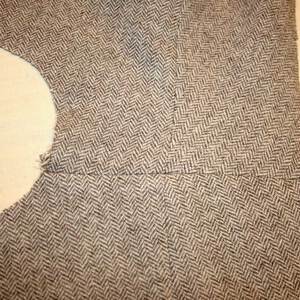
One of the hallmarks of fine sewing is a smooth, unpuckered seam. One particular part of a garment that is prone to puckering is a set-in sleeve. Part of the reason for this is that more ease is built into the sleeve cap than the armhole allows. What that means is that if you measure the circumference of the armhole of your garment, and compare that measurement to the length of the sleeve cap, you’ll find that the sleeve cap measurement is significantly longer than the armhole measurement. You have to take up that extra length as you sew the sleeve to the body of the garment. When setting in a sleeve, it’s really easy to get big ol’ pinches and puckers in the sleeve cap. And put bluntly, that’s just not a good look. But by taking your time and doing one or two extra steps, you can eliminate those unsightly puckers and make a garment that looks smooth and polished. Let’s see how, using a muslin for a jacket that I’m making.
Most pattern instructions tell you to run two rows of ease stitching along the edge of the sleeve cap between the notches. Then match up the markings on the sleeve and armhole, pull the ease-stitch threads to gather the sleeve, and stitch the sleeve and the garment together. As you can see from the picture below, the results can be disappointing. No amount of pressing will remove a pucker once it’s stitched into place.
Why does this happen? Using ease stitching, you don’t have as much control over the distribution of the ease in the sleeve. But fear not! You can easily take back control and get great results. I have two favorite methods for inserting a sleeve: pin-easing and hand-basting. Both are worth the extra time they take, and both yield smooth, lovely results.
Pin-basting
Pin-basting is really easy. Instead of using easestitching, simply use a whole lot of pins to ease the sleeve into the armhole. First, match up your markings (notches, dots, etc) and pin. Position your pins perpendicular to the seamline. Then pin between the markings, distributing the ease as you go. To get the best results, I position my pins between 1/8 inch and 1/4 inch apart. You don’t need to space the pins that closely in the un-eased part of the seam. You can then sew your seam, being careful to remove the pins before your needle hits them.
Hand-basting
I often add an extra step before sewing the seam, and after pin-basting, I often hand baste my sleeve to the garment. This gives one more level of control over the ease, and I can then sew without pins in my fabric. It is also very worthwhile when sewing finicky fabrics. I always hand baste taffetas and other stiff fabrics, and it makes handling slippery fabrics (like charmeuse) so much easier.
When sewing the sleeve into your garment on your machine, take your time and use your fingers to manipulate the fabric to avoid any tiny puckers. This ensures a smooth set sleeve.
I encourage you to try out these methods. They don’t take a lot of extra time, but they sure do pay off in a great-looking finished garment.
Want more? Pressing properly is also crucial to the set of a sleeve. For more information on pressing, see our pressing video.



































Log in or create an account to post a comment.
Sign up Log in